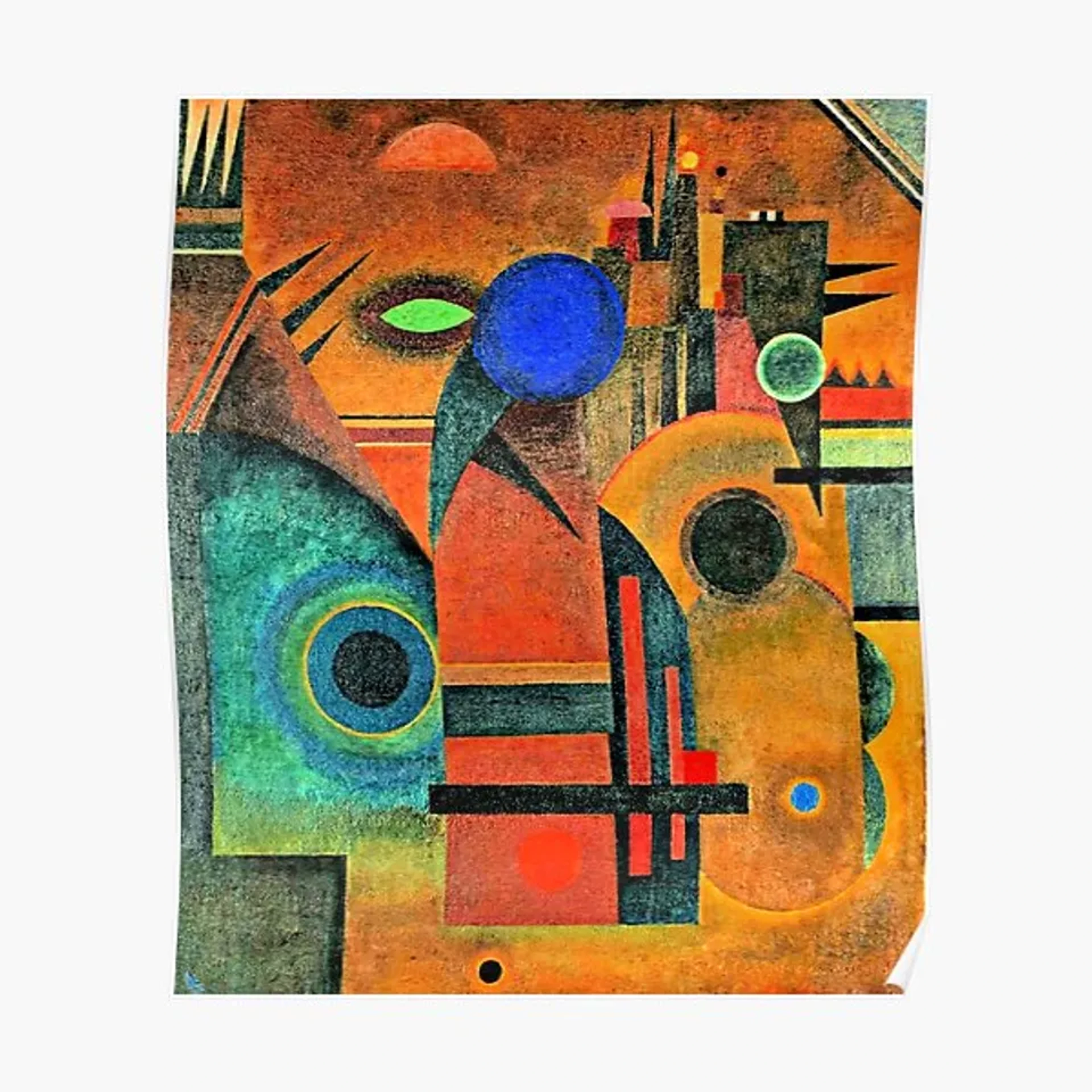
Understanding Abstract Art: Your Personal Guide to Meaning & Connection
Unlock abstract art's secrets with this deeply personal guide. Explore why artists create non-representational works, learn practical tips to engage with emotion and form, and discover profound meaning through color, line, and your own intuition. Start your unique artistic journey here.
Understanding Abstract Art: Your Personal Guide to Non-Representational Meaning and Connection
Let's be honest, we've all been there. I remember standing in front of a particularly perplexing canvas years ago, a riot of splatters and bold strokes that seemed to defy all logic, and feeling that familiar pang of inadequacy, that nagging suspicion that everyone else "gets it" and I'm just… missing the memo. It's a bit like trying to read a deeply personal diary written in a language you don't speak, isn't it? Frustrating, intriguing, and sometimes, frankly, a bit annoying. And yes, I might have muttered, "My kid could do that," under my breath at some point. (Spoiler alert: sometimes, my inner critic still does.)
But here's the thing: abstract art isn't meant to be read like a novel or interpreted like a literal photograph. It's a whole different beast, a language spoken not in words or recognizable images, but in emotion, form, and pure expression. And I'm here to tell you, from one curious soul to another, that you absolutely can find meaning in it. It's less about decoding a secret message and more about opening yourself up to a conversation. By the end of this, you might just find yourself having a quiet, profound conversation with a canvas you once thought was just... paint. Let's dive in.
The Unspoken Language: Why Abstract?
So, why do artists even bother with abstract art? Why not just paint a nice landscape or a portrait? (No offense to landscapes or portraits, I love them too!) For me, as an artist, it's often about capturing something that words or traditional imagery simply can't. I recall a specific moment standing by the sea, the wind whipping, the light shifting – a feeling so vast and fleeting that trying to paint a literal coastline felt like trying to bottle the ocean itself. How do you paint the raw feeling of being utterly insignificant yet profoundly connected under an immense sky?
It's about a feeling, a fleeting moment, a complex thought, or the sheer energy of color and form. Even before full abstraction, movements like Impressionism with its focus on light and momentary perception, or Symbolism delving into inner psychological states, were subtly shifting art away from purely literal depiction, setting the stage for what was to come. Artists began to realize that some feelings or ideas, especially those born from the tumultuous 20th century, couldn't be contained by literal representation. The advent of photography, for instance, liberated artists from the sole obligation of depicting reality, opening up new avenues for expression. Similarly, the psychological impact of world wars led many to seek new, non-representational forms to express inner turmoil and a fragmented world. This desire to convey the ineffable led pioneers like Wassily Kandinsky (often cited as the first abstract painter), Kazimir Malevich, and Piet Mondrian to break free from traditional representation, pushing the boundaries of what art could be.
Their pioneering efforts paved the way for diverse abstract movements like Cubism (think Pablo Picasso), which fragmented reality; Futurism (like Umberto Boccioni's dynamic sculptures), which glorified motion and technology; Abstract Expressionism (Jackson Pollock's energetic drips or Mark Rothko's contemplative color fields), focusing on raw emotion and spontaneity; and Minimalism (Donald Judd's precise forms), stripping art down to its bare essentials. Each movement, in its own way, pushed against the confines of literal depiction, seeking new visual languages.
Imagine trying to describe the feeling of pure joy. You could list things that make you happy, but how do you capture the essence of joy itself? Abstract art attempts to do just that for all sorts of human experiences. It peels away the literal to get to the core of an idea or emotion. It's brave, really, to put something so raw and open out there, devoid of the safety net of recognizable forms. The challenge lies in translating an abstract concept into a non-representational form that still resonates. And it asks you, the viewer, to be brave too – to step into the unknown with it.
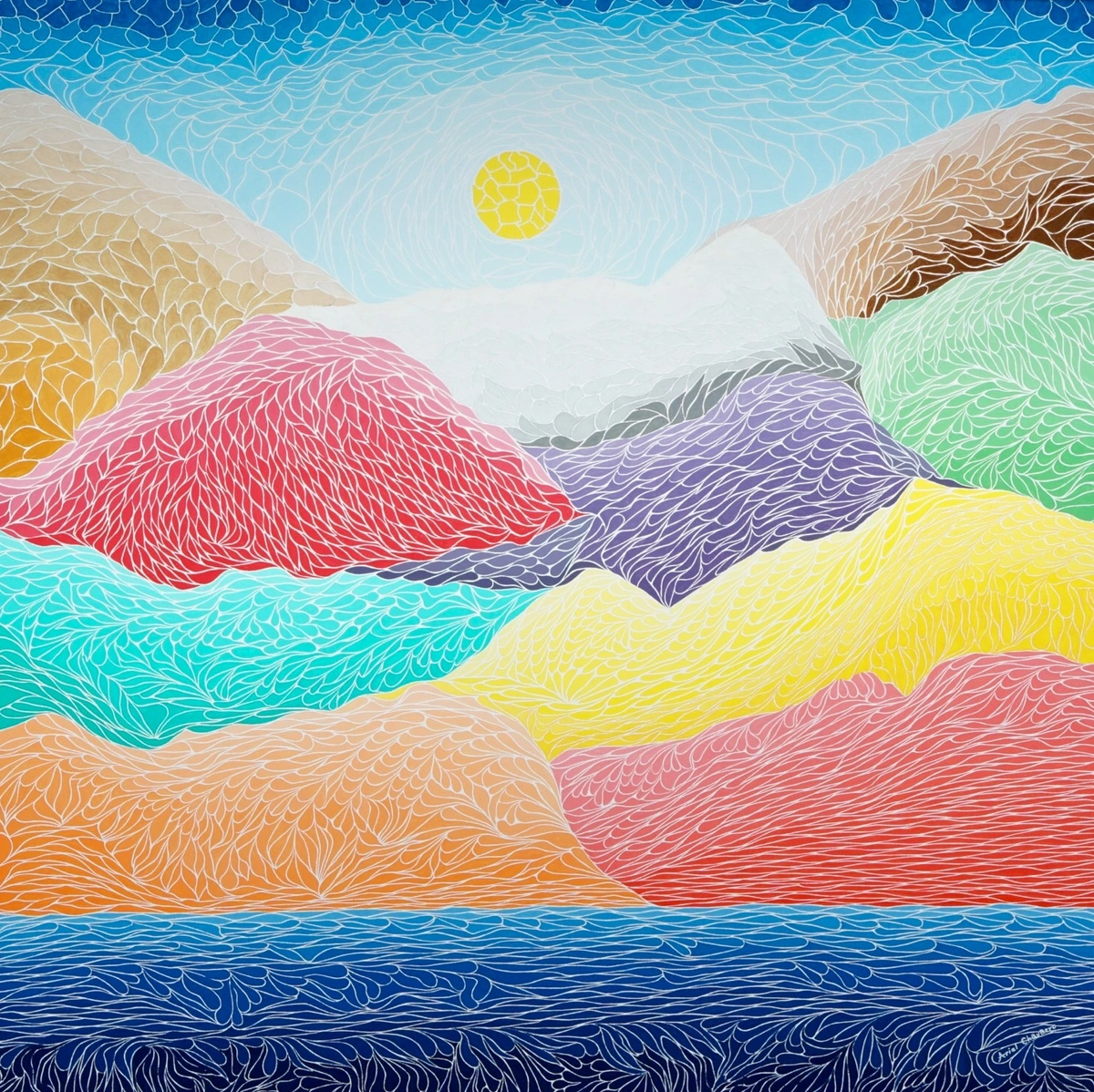
https://commons.wikimedia.org/wiki/File:The_Creation_Of_The_Mountains.jpg, https://creativecommons.org/licenses/by-sa/4.0/deed.en
My "No-Sweat" Guide to Approaching Abstract Art
Alright, feeling ready to jump in? Great. This isn't about rigid rules, it's about finding your way in. Think of it as a friendly handshake with the canvas.
Ever felt completely lost in front of a canvas? Ready to throw out the rulebook? Good! Forget everything you think you know about "understanding" art. This isn't a test. It's an invitation. Here are a few ways I approach abstract pieces, both as a creator and a viewer, that I hope help you too:
1. Ditch the "What Is It?" Question
This is perhaps the biggest hurdle. Our brains are wired to recognize patterns, faces, objects. When we don't see them, we often feel confused or even cheated. But with abstract art, the question isn't "What is it?" but rather, "What does it do?" or "How does it feel?" It's like listening to instrumental music – you don't ask what the notes are, but how they make you feel. It's tricky, I know; our brains love to categorize, to slap a label on things. But trying to force a literal interpretation onto abstract art is like trying to fit a square peg in a round hole – frustrating for everyone involved! Once you've freed yourself from that literal expectation, you can then turn your attention to the building blocks that truly speak. (And perhaps discover your brain's secret superpower for seeing the unseen, who knew?)
2. Focus on the Building Blocks: Color, Line, Shape, Form, Texture, Composition, and Space
Instead of trying to see a tree, look at the individual elements. What colors are used? Are they bright or muted? Do they clash or harmonize? Try this: next time you're facing an abstract piece, pick just one color that jumps out at you. Sit with it. What does that specific color feel like? What does it make you think of, divorced from any recognizable object? Are the lines sharp and angular, or soft and flowing? Or focus on a single line – is it restless? Serene? Where does it lead your eye? What shapes dominate? Pick a dominant shape. Does it feel heavy or light? Stable or precarious? Do they suggest form – an implied volume or three-dimensionality, even on a flat canvas? Is the surface smooth or rough? Can you almost feel the surface just by looking? What does that tactile suggestion add to the overall impression? These are the artist's vocabulary. And how are they all arranged? That's composition – the thoughtful placement of these elements to create balance, tension, or a particular flow. Consider how they interact. A bold red stripe next to a jagged black line might evoke a very different feeling than soft, blending blues and greens. This is where the emotional language of color truly shines. When I'm trying to convey a sense of quiet contemplation, I often lean into soft, blending blues and greens, letting them wash over the canvas, relying on their inherent calming effect. (Discover more about the emotional language of color in abstract art here).
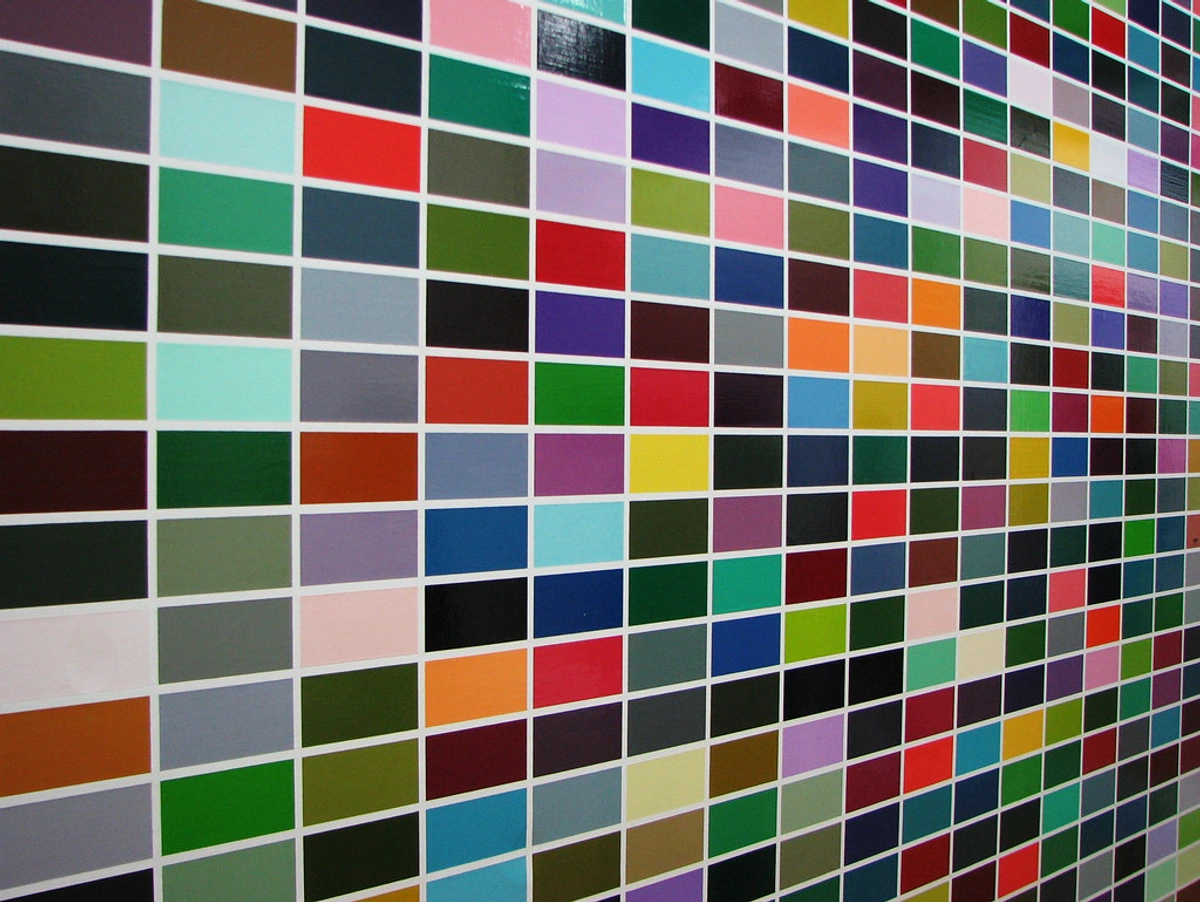
https://live.staticflickr.com/3173/2971037978_95f41144d3_b.jpg, https://creativecommons.org/licenses/by/2.0/
Space also plays a critical role; positive and negative space – the forms within the painting and the areas around them – can pull you in or push you away, creating a sense of openness or confinement. For example, a vast, empty space might evoke solitude or freedom, while tightly packed forms could feel claustrophobic or energetic. It’s like the silence between notes in music; it defines what is heard. To truly grasp how artists speak this visual language, exploring all art elements can be incredibly insightful, especially understanding the critical role of negative space in abstract art.
And a quick thought on the medium itself – the material the artist used. Oil paints, with their rich depth and slow drying time, allow for deep layering and nuanced blending, often lending a weighty, contemplative feel. Acrylics, on the other hand, dry quickly, encouraging spontaneity, bold strokes, and vibrant, flat expanses. Mixed media can bring in unexpected textures and dimensions, inviting an entirely different kind of exploration. Each medium whispers its own story, informing the artist's choices and, in turn, your experience.
Element | What to Look For | Potential Impact (Artist's Use) |
|---|---|---|
| Color | Hue, saturation, value, contrast | Mood, energy, temperature |
| Line | Straight, curved, thick, thin | Movement, direction, emotion |
| Shape | Geometric, organic, amorphous | Structure, stability, fluidity |
| Form | Implied three-dimensionality, volume | Weight, solidity, illusion of depth |
| Texture | Smooth, rough, layered, scraped | Tactility, depth, visual interest |
| Composition | Arrangement, balance, flow | Harmony, tension, focus, overall coherence |
| Space | Positive, negative, depth, emptiness | Relationship, tension, volume, atmosphere |

https://live.staticflickr.com/65535/53064827119_1b7c27cd96_b.jpg, https://creativecommons.org/licenses/by-nc-nd/2.0/
3. Embrace Your Gut Reaction (It's Valid!)
This is crucial. Abstract art often bypasses our logical brains and goes straight for the emotional core. Do you feel calm? Anxious? Energized? Confused? All are valid reactions. Don't censor yourself. Your first, raw emotional response is your entry point. I often find myself just standing there, letting the colors wash over me, waiting for a feeling to bubble up. Sometimes it's nothing, sometimes it's everything. I've certainly walked away from pieces feeling absolutely nothing, only to have them sneak back into my thoughts days later, unfolding a meaning I hadn't perceived. (Yes, my brain works in mysterious ways, probably too much coffee involved.) This immediate connection, or even a delayed one, is often the most profound way to start learning more about interpreting abstract art. (Your gut feeling? That's the most honest, most profound critic you'll ever find. Trust it.)
4. Peek at the Title (But Don't Depend on It)
Sometimes, the title offers a little nudge, a hint towards the artist's initial intention or inspiration. "Composition with Red and Blue" might tell you less than "Urban Symphony," but both can set a tone. Use it as a suggestion, not a strict instruction manual. The beauty is, your interpretation can be completely different from the artist's, and that's perfectly fine. (It's like when someone tells you a secret, but you already have your own, way more dramatic version.) It's simply another layer to consider after your initial emotional response. (A gentle whisper, not a loud command.)
5. Consider the Context (and the Physical Presence!)
A quick search about the artist or the art movement (even just a glance at the museum label with your phone ready for a quick search!) can sometimes provide valuable insights into why they created what they did. Was it a reaction to war? A philosophical statement? Understanding that an artist was reacting to a specific social upheaval, for example, might help you perceive the underlying tension or chaos in their brushstrokes, even if you don't need that knowledge to feel it. Knowing a bit about the history of abstract art or modern art movements can enrich your experience, but remember, the art should still speak to you directly. Ultimately, the piece either grabs you, or it doesn't, regardless of its pedigree. (A little background never hurts, but your eyes are the boss.)
Also, don't underestimate scale; a massive canvas can engulf you, while a tiny one draws you in for an intimate moment.
6. Make It Personal
This is my favorite part. Does a certain combination of colors remind you of a sunset from your childhood? Does a chaotic swirl evoke the feeling of a busy city street you once loved (or hated)? Connect the art to your own memories, experiences, and feelings. I remember seeing a large, vibrant abstract piece that, for some reason, transported me back to the chaotic but exhilarating energy of a crowded Amsterdam market from my youth. The meaning isn't just in the painting; it's also in you and how you interact with it. This is where the true magic happens, where the art becomes uniquely yours. It's what makes art compelling. (Explore what truly makes abstract art compelling). And honestly, who doesn't love a good personal connection, especially when it involves art? (It's about your story, not just the artist's.)
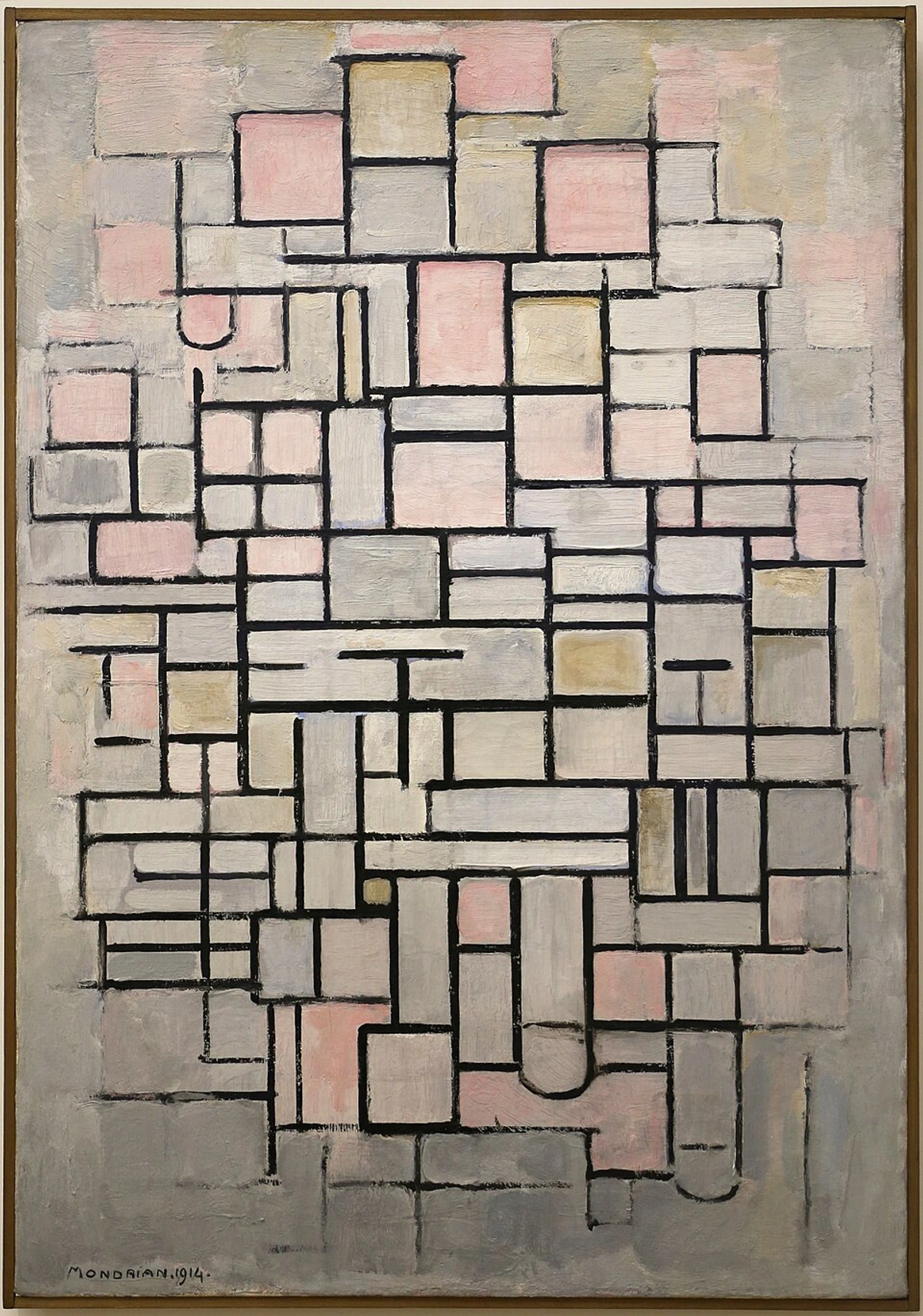
https://commons.wikimedia.org/wiki/File:Piet_mondrian,_composizione_n._IV-composizione_n._6,_1914,_01.jpg, https://creativecommons.org/licenses/by/3.0
"My Kid Could Do That!" – A Common Misconception
Ah, the old chestnut! "My kid could do that!" We've all heard it, haven't we? It’s arguably the most common, and perhaps most understandable, reaction to abstract art that seems deceptively simple.
It reminds me of those seemingly effortless dishes by a master chef – you taste it and think, "That's just a few ingredients!" but the depth of flavor is immense. But here's the thing: simplicity in art is often the hardest thing to achieve. It takes skill, intention, and a deep understanding of composition, color theory, and expression to create something truly impactful, even if it looks like a few squiggles.
It’s easy to dismiss a simple-looking abstract piece, but the journey to that apparent simplicity is often immensely complex. Unlike a child’s spontaneous mark-making – which is beautiful in its own right, a pure exploration – an abstract artist's choices are deeply informed by a mastery of art principles, a profound understanding of color theory, composition, and art history, and a deliberate intent to evoke a specific emotional or intellectual response. It's the difference between a child babbling charmingly and a poet choosing precisely the right word for immense impact. The 'childlike' quality, when present, is a choice, not a lack of skill.
And believe me, the path to that 'simple squiggle' can be filled with more existential dread than a tax audit. I've certainly had days in my studio where a piece fought me every step of the way, and the final 'simple' brushstroke took hours of frustrated negotiation with the canvas. The "long, thoughtful process" behind my own abstract works often involves layers of experimentation, countless decisions about color interaction, and a deep, often frustrating, negotiation with the canvas until the initial feeling finds its form. It's a journey from concept to canvas that isn't always linear, and frankly, sometimes it just looks like a mess until it suddenly clicks. Curious about the real grit? Read about my personal creative process and how one learns how to approach abstract art. (Because even artists have bad days, and sometimes those 'aha!' moments arrive after a lot of 'uh-oh!' moments.)

https://freerangestock.com/photos/177284/artists-workspace-filled-with-paint-brushes-and-supplies.html, https://creativecommons.org/public-domain/cc0/
Abstract Art: More Than Just Decoration
While abstract art certainly looks fantastic in modern interiors (learn how abstract art elevates modern interiors), its purpose goes far beyond mere aesthetics. It's a dialogue, a mirror, a provocation. It might provoke a forgotten memory, or mirror a feeling you didn't know you had, starting an internal dialogue within you. For me, creating and engaging with abstract art has fundamentally shifted how I see the world, forcing me to look beyond the obvious, to find beauty in the unseen, and to embrace ambiguity. It's like learning a secret language that suddenly makes everything else more vibrant. It challenges us to see beyond the obvious, to feel without a clear narrative, and to find beauty and meaning in the unexpected. This deeper engagement truly reveals the profound meaning of art itself. And speaking of experience, if you're ever near 's-Hertogenbosch, I invite you to see some of these principles in action at my museum. (Visit my museum in 's-Hertogenbosch). Abstract art continues to evolve, constantly pushing boundaries and reflecting the complexities of our contemporary world, proving its enduring relevance beyond mere trends.
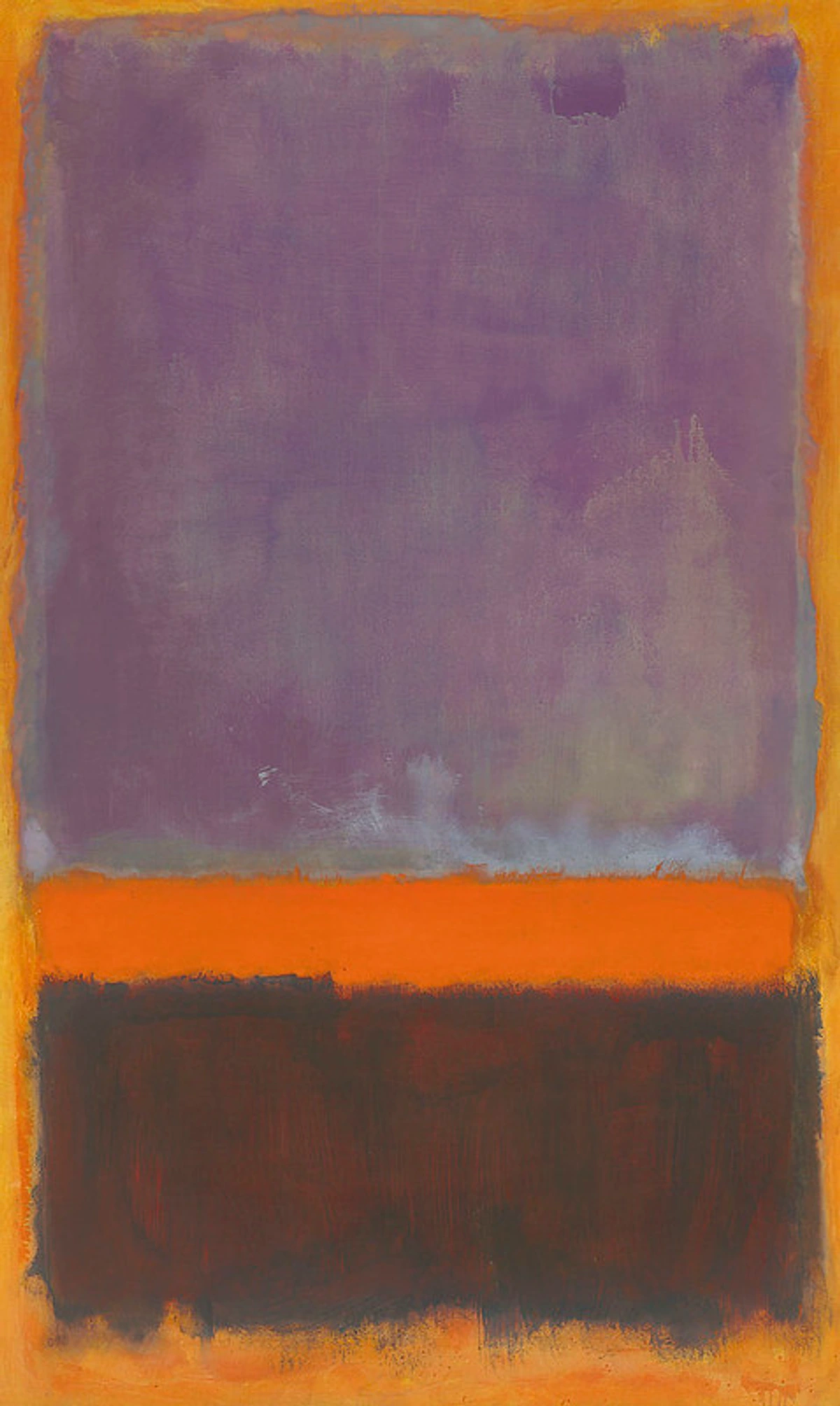
https://www.flickr.com/photos/gandalfsgallery/27744325407, https://creativecommons.org/licenses/by-nc-sa/2.0/
Frequently Asked Questions About Understanding Abstract Art
Still pondering? Don't worry, you're not alone. Here are some common questions I hear, and my thoughts on them – because every question is a doorway to deeper understanding.
Q: Do I need a special art education to appreciate abstract art?
A: Absolutely not! While art history can provide context, your personal response is paramount. It's about feeling, not facts. Think of it like a beautiful sunset; you don't need to be an astrophysicist to appreciate its beauty.
Q: What if I just don't like abstract art? Is that okay?
A: Of course it's okay! Art, especially abstract art, is deeply personal. Not every piece will resonate with everyone, and that's perfectly normal. The goal isn't to force yourself to like it, but to find pieces that do connect with you, or at least understand why some people do. It's all part of the vast world of all art styles.
Q: How do artists know when an abstract piece is 'finished'?
A: Ah, the eternal question! For me, and many abstract artists, it's less about reaching a predefined 'finished' point and more about finding a moment of internal resonance. It's when the dialogue between me and the canvas feels complete, when the piece itself starts to hum with its own energy, and when adding or subtracting anything feels like it would disrupt that delicate balance. Sometimes it's a quiet whisper, sometimes a triumphant roar. It's often an intuitive process, a feeling rather than a checklist. And sometimes, after months, I still look at a 'finished' piece and wonder if it could use one more tiny stroke. (The struggle is real.)
Q: How can I tell if an abstract painting is "good"?
A: This is tricky because "good" is subjective. While a single definition of "good" eludes us, common indicators often include a strong sense of composition (the way elements are arranged), balance, use of color (whether harmonious or intentionally jarring), an overall sense of intent or energy, and often, a spark of originality or innovation. Beyond that, factors like the artist's reputation, their influence on subsequent movements, or critical acclaim within the art world can also play a role, but ultimately, if it evokes a strong, genuine feeling in you, that's a pretty good sign it's effective. (Explore famous abstract art examples).
Q: Is there a specific way to look at abstract art?
A: Not really a specific way, but I suggest giving yourself time. Step back, then lean in. Look at it from different angles. Let your eyes wander. Don't rush. And remember, it's okay if your interpretation changes over time, or even from one viewing to the next. The best art keeps giving.
Q: How do I start collecting or buying abstract art?
A: The best way to start is simply to trust your gut. Don't worry about trends, investment potential, or what others think. If a piece genuinely resonates with you, evokes a feeling, or simply makes you want to look at it again and again, that's your starting point. Begin with what you love, even if it's just a small print. It's about building a personal connection, not a portfolio of famous names. It's also worth researching artists whose work you admire, perhaps looking into their creative process or even visiting their studio or museum if possible. Remember, collecting art should be a joyful, personal journey. Why not start by browsing my own collection and seeing if anything sparks your interest? (Browse my collection of abstract art for sale).
Bringing it All Together: Your Personal Connection
So, there you have it. My hopefully helpful journey through the vibrant world of abstract art. It's not about cracking a code, but about unlocking a part of yourself that responds to pure visual language. It's about giving yourself permission to feel, to wonder, and to connect without the pressure of finding a "right" answer. After all, isn't that what life's best experiences are all about? The unexpected connections, the quiet moments of understanding, the sudden bursts of emotion. It's an ongoing conversation, one that deepens the more you engage with it. And perhaps, a quiet whisper that says, "I get it now. Or at least, I'm starting to."
What hidden feelings or forgotten memories might abstract art unlock for you? It's a question worth exploring. If this journey has sparked a connection, perhaps you'll even consider bringing a piece into your own space. I invite you to explore my collection and find a piece that speaks to your own unique story. After all, art isn't just for museums; it's for living with, for sparking joy and contemplation every single day. (Browse my collection of abstract art for sale).
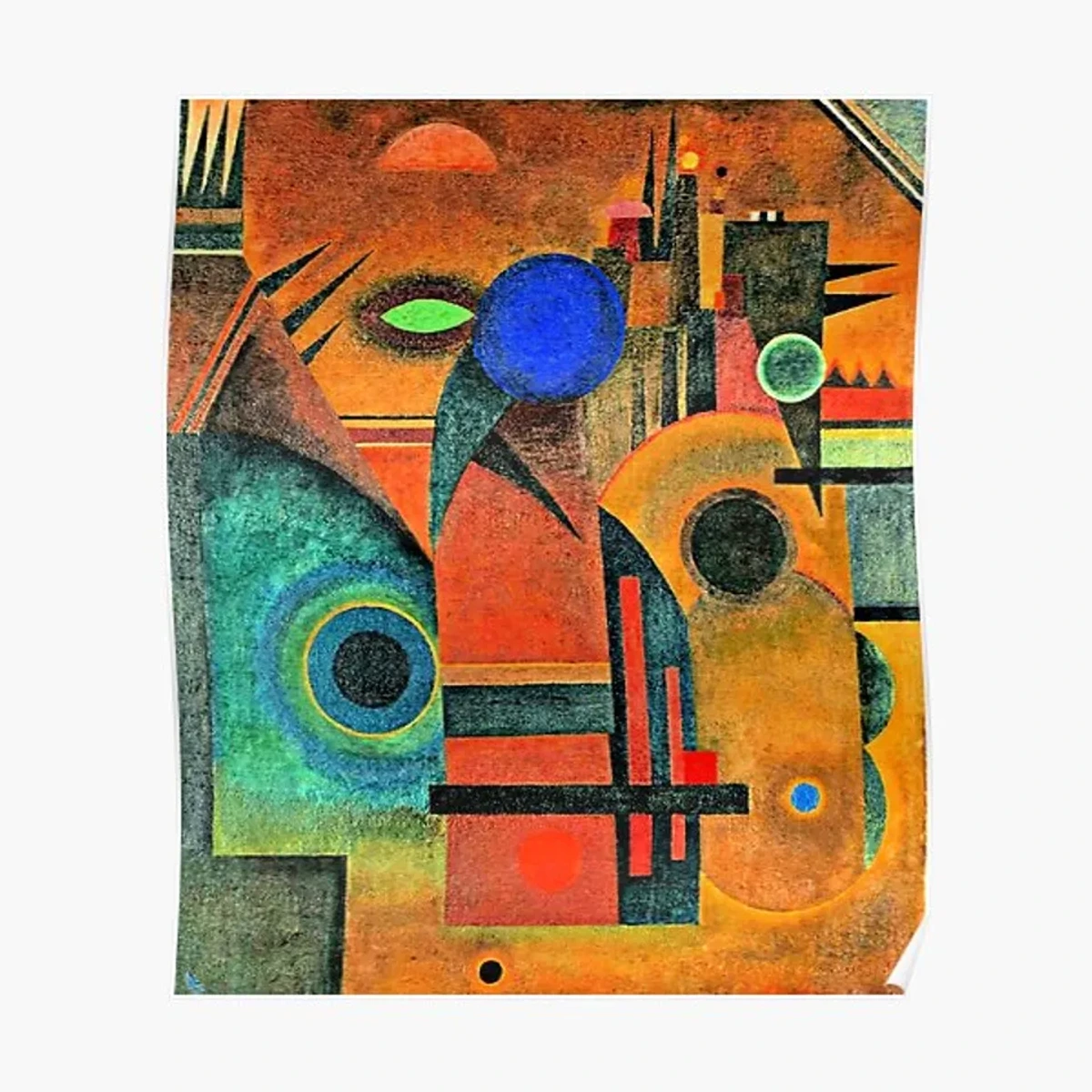
Printerval.com, licence




